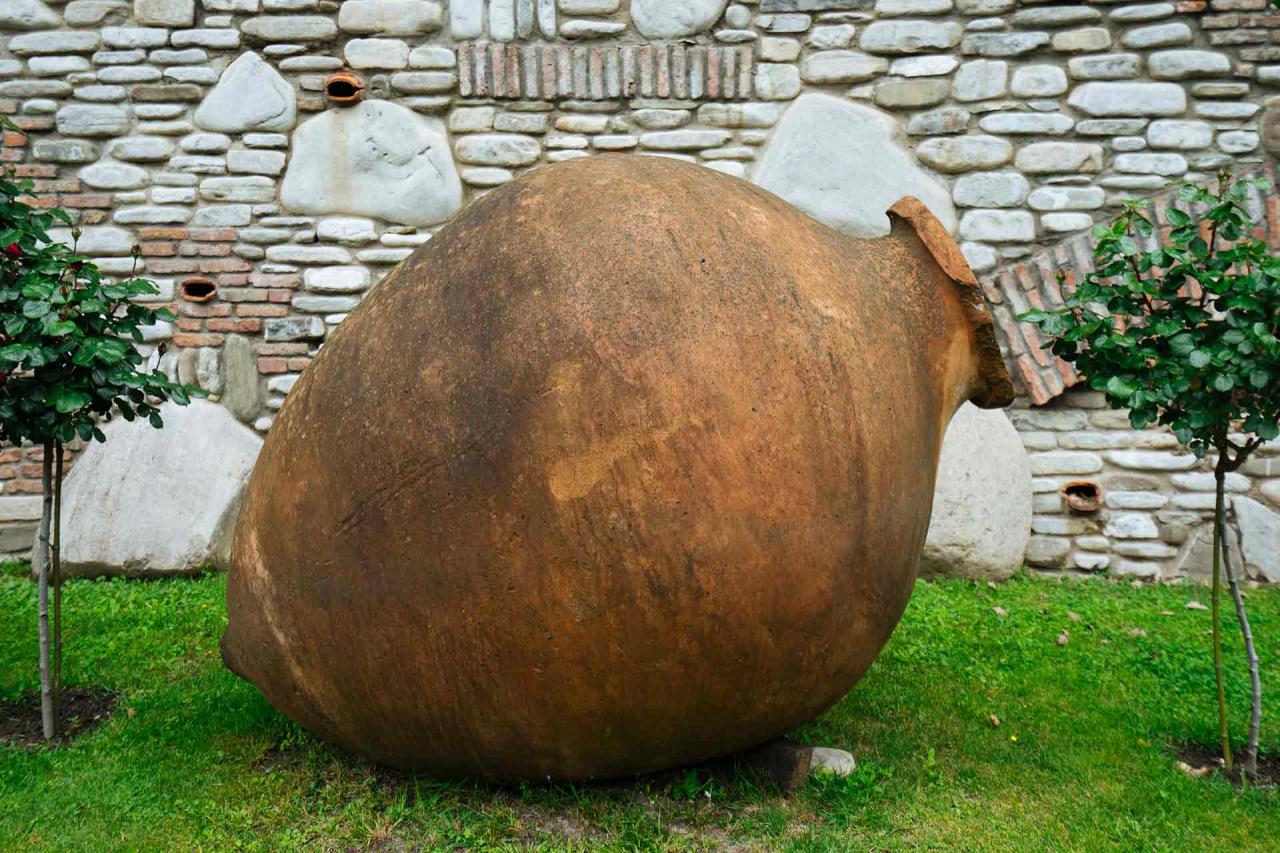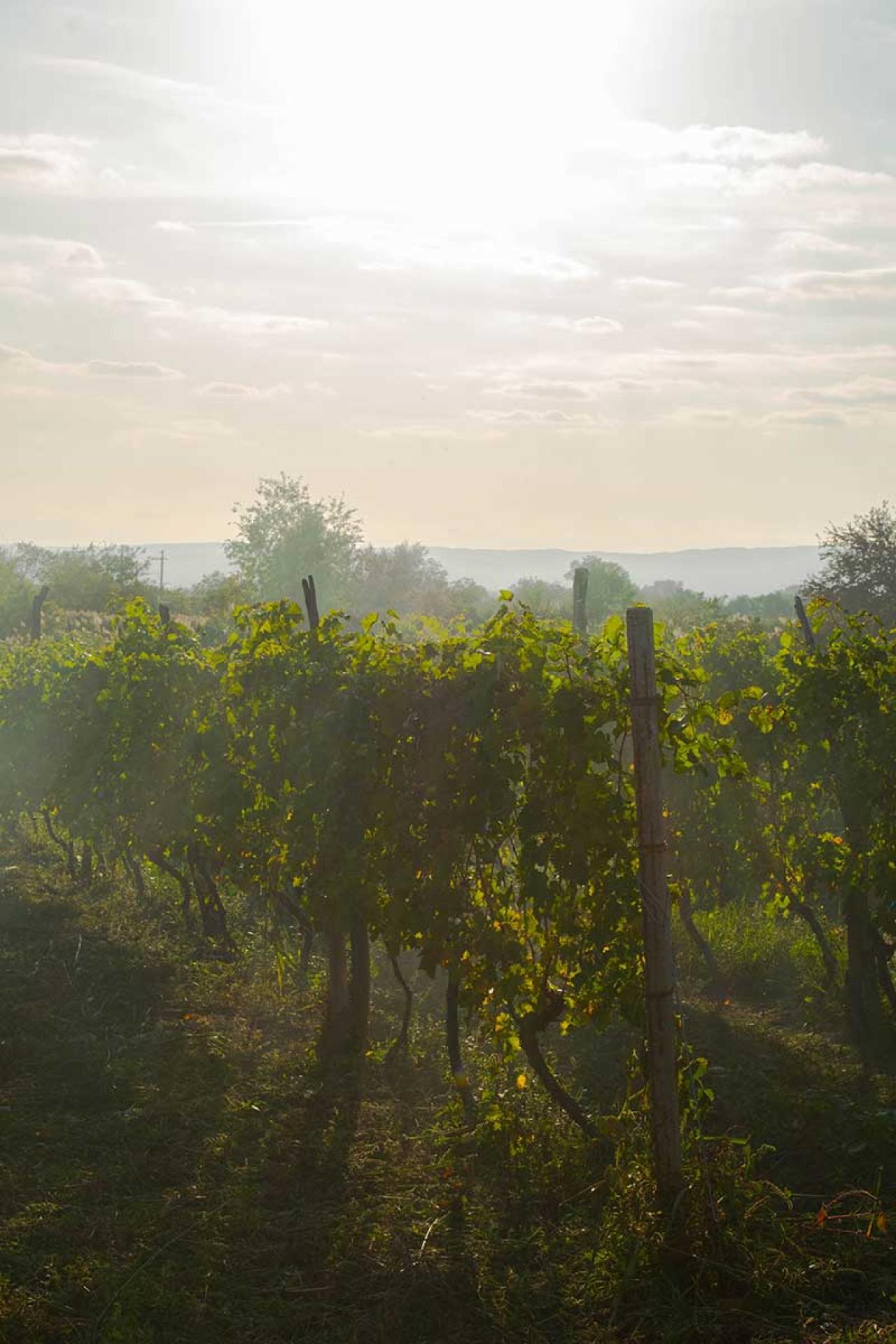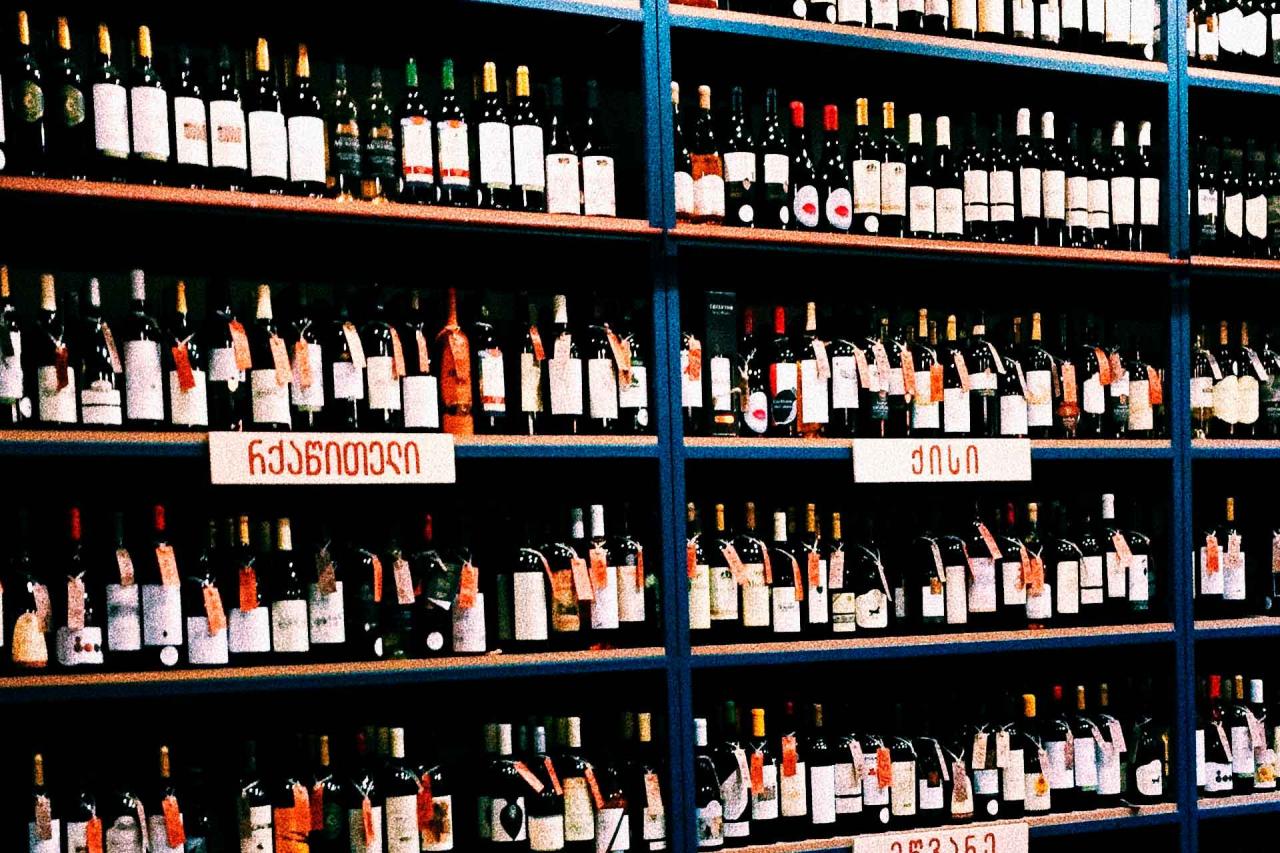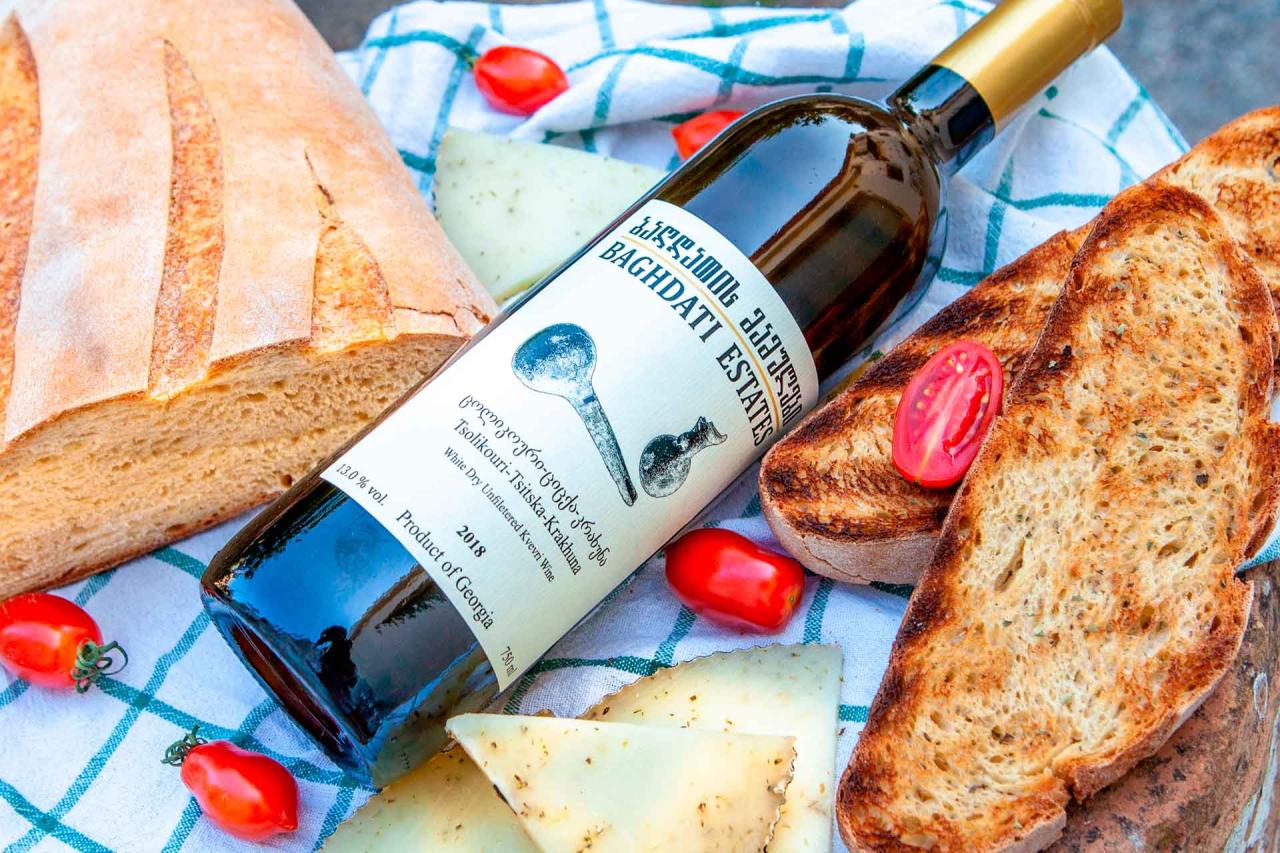The main reason for its recent popularity is that it's more environmentally friendly than conventionally made wines. Due to the environmental changes of the last few years, consumers are choosing to buy more “green” products, including wines.
However, orange wine is one of the world's oldest wines, and in the past, all white wines were orange. Keep in mind that orange refers to the color of the wine as a result of the specific winemaking practices used in its production, but we'll get into that later.
Georgian orange wine, also known as Georgian amber wine, has a long and fascinating history that is well worth exploring. This article will discuss the history of orange wine from Georgia, as well as the most well-known Georgian winemaking regions and some of the best Georgian skin contact wines to try.
Get updates on the latest posts and more from Wine Bugle straight to your inbox.
Georgian amber wine
Orange wine, or amber wine as Georgians prefer to call it, may cause confusion because one might think it refers to a wine made from oranges or a drink centered on wine and orange juice, such as a mimosa, but this is not the case. Orange wine is made entirely of grapes; no oranges are used in the production process This wine, however, does have a distinct orange hue, and that’s how it gets its name.
Orange wine is a type of white wine that is made by leaving the grape skins and seeds in contact with the juice of the grapes in order to create a finished product with an orange color. The skins and seeds contain color pigment, phenols, and tannins, and by staying in contact with the juice, these ingredients are released into it, providing the orange hues.
Allowing the grapes to remain in contact with the juice is an important part of the red winemaking process because it improves color, flavor, and texture. This, however, would normally be considered undesirable in white winemaking. However, because orange wine is not a simple white wine, winemakers combine techniques from both red and white winemaking to create it.
Orange wine is also not simple in terms of aromas and flavors. They have been described as "bold, with aromas of stone fruit and tropical fruit, nuts, ripe apples, linseed oil, juniper, sourdough, and dried citrus-fruit zest" by both wine connoisseurs and wine lovers. As a result, this wine can complement a wide variety of dishes, including those from exotic cuisines, such as traditional Moroccan and Middle Eastern delicacies.
The production of orange wines is not limited to Georgia. While they aren’t frequent, they are made in many different areas of the world. Italy, Slovenia, Greece and the United States of America, all produce excellent skin contact wines.
History of orange wine from Georgia
Georgia is one of the oldest wine making countries in the world. For at least 8000 years, the fertile valleys and protective slopes of Transcaucasia have been home to grapevine cultivation and wine production.
For approximately 4000 years, the people of Georgia have used large, lemon-shaped clay pots known as qvevri in their winemaking. In these sealed pots, the wine would ferment underground. As winemaking technology advanced, these clay pots were replaced with stainless steel tanks, but qvevris are still used in Georgia to make orange wine.

Georgia is home to over 500 indigenous grape varieties, accounting for roughly one-sixth of the world's total grape varieties. Georgia's vineyards include rare vines found nowhere else on the planet and some of them even serve as living vine libraries where visitors can taste rare grapes. Around 40 of the 500 native varieties are commercially grown. The most well-known are Rkatsiteli (white) and Saperavi (red).
The process of making orange wines can be considered as "natural" winemaking, since there are little to no additives used. Sometimes, the winemakers don’t even add yeast, the organism that is responsible for converting sugars to ethanol during the fermentation process. In traditional winemaking, there are specific strains of yeast used in order to help provide desirable characteristics, like aromas, or speed up the fermentation process. The yeasts that are commonly used in orange winemaking are those that are naturally found on grape skins, also known as wild yeasts.
Georgian wine regions

Kakheti region
Kakheti is home to more than 75 percent of Georgia's grapes, making it the country's winemaking capital. The region is best known for its orange wines, red wines made from Saperavi and Cabernet grapes, and white wines made from Rkatsiteli and Khikhvi grapes.
Antadze Wines, located in the village of Manavi, grows three of Georgia's most famous grape varieties: Mtsvane kakhuri, Rkatsiteli, and Saperavi (the first two on old vines). It also makes organic wine with the qvevri method, producing up to 13,000 bottles per year.
Kartli region
Kartli is in the country's center, and while orange wines are produced there, the region is best known for its sparkling wines.
Kartli's terroirs and grape varieties result in the production of very high-quality still and sparkling wines. This wine region actively employs both traditional winemaking techniques and Georgian methods, such as the fermentation of white grape juice with grape must or the use of Qvevri wine making technology.
Imereti region
Wine lovers have been known to highly appreciate the wines of the region because of their refreshing character and high level of acidity, due to its terroir. Imeretian wines are best characterized as "extremely playful, vibrant, fleshy and lively".
The classic method of white winemaking is primarily used in the Imereti wine region; however, it is important to note that white wine is also made using red wine technology, and qvevris, also known as churis in the local dialect, are actively used.
Racha - Lechkhumi region
Racha-Lechkhumi is a small wine region in Georgia. Because of the extremely high sugar levels created by the sunny climate, almost all wines from Racha-Lechkhumi vineyards are very sweet.
The primary white varieties of the area Tetra, Tsitska, and Tsolikouri (Bazaleturi), while red wines are made from Alexandrouli, Mujuretuli, Usakhelauri, Orbeluri Odzhaleshi, and Saperavi.
Meskheti region
Meskheti is an ancient wine-making region in Georgia and it is believed that some of the oldest Georgian grape varieties, such as Saperavi, Dzelshavi, Khikhvi, may have originated there.
Vineyards in Meskheti have traditionally been planted on terraces and since there aren't many vineyards in the region, only the Natenadzes' wine cellar produces very small amounts of Meskhetian wine.
Black Sea Coast Area
These regions' viticulture and winemaking are located along the Black Sea coast and the vineyards are found as low as 2-4 meters above sea level and extend up to 500 meters.
This region is notable for its vine planting culture, which was almost entirely cultivated in high vineyards until the nineteenth century. Chkhaveri, Jani, Mtevandidi, Skhilatubani, Ojaleshi, Godaaturi and Chechipeshi are the most well-known historical varieties.
Georgian wines you should try

Shumi Iberiuli Khikhvi
Try Shumi Iberiuli Khikhvi for an orange wine that is actually created in a qvevri and that, in terms of flavor and body, embodies what Georgian amber wines have to offer. This wine is produced from the dry Khikhvi grape, a white grape that is indigenous to Georgia. It has luscious notes of white peach and nectarine, some minerality, herbaceous and floral aromas, and a bitter finish that perfectly balances the other flavors in a sophisticated and satisfying way.
Papari Valley 3 Terraces Rkatsiteli
The wine is initially fermented in clay jars according to a traditional, organic method (the so-called qvevri). Perfect to hand out at a cocktail party, dinner, or other special event. The wine looks light orange in color and tastes incredibly crisp. You'll taste various fruits, nuts, and a bitter flavor that you're familiar with from green tea. Pair with salads, light meat dishes, fish or chicken for a combination that will blow you away.
Baia's wines Tsistka-Tsolikouri
This exceptional Georgian amber wine is made by blending two indigenous Imeretian varieties, Tsitska and Tsolikouri.Both grape types are low in sugar and high in acidity, making them well suited to the humid western Georgian climate.
Persimmon, apricot, and citrus aromas are present, as are honeycomb and sweet spice. A long finish is enhanced by moderate tannin. For a pairing made in heaven, serve with apple-braised pork and grilled meats and vegetables.
Conclusions
In conclusion, we hope that it has become clear that Georgian orange wines are definitely worth adding to your list of wines-to-try. Not only does the area have a long history of winemaking, which means that it has a lot of things to offer, but these products are more environmentally friendly and more unique in terms of scents and flavors.
If you enjoy finding the perfect food pairing to a bottle of wine, you'll definitely have fun experimenting with different cuisines and Georgian skin contact wines. But don't forget to let us know when you find the perfect combo.
Cheers!
Photos by Alex Batonisashvili, ALEXANDRA TORRO, Anastasiia Voitenko on Unsplash

